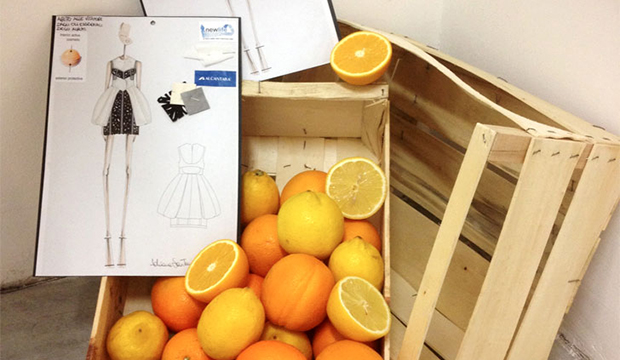

Little known fact about Italy: there is a large amount of citrus wastage there. In one of the most fashionable countries in the world, it would only make sense that designers would take an environmental issue like this and use it to better the industry. In response to the waste, three students at the Polytechnic Institute of Milan have developed a textile called “orange fiber.”
The fabric is created from cellulose extracted from the recycled fruit. While a textile made from food is a little unusual at first glance, the idea has environmental and social benefits, as well as being a positive addition to the fashion and textile industries.
For starters, it is created from a renewable resource, citrus waste.
By sourcing something that would have been otherwise thrown away as a material, the fabric’s carbon footprint is pretty small., and in fact improves the environment rather than hurting it (as some textile processes can).
In addition to being good for the environment, the textile is good for the body as well, containing ayurvedic health properties. As it is made from citrus, the natural oils within the fabric contain vitamins A, C and E. Upon contact, these vitamins are released and absorbed through the skin.
Additionally, it is the hope of the designers that orange fiber can give the local fashion industry a positive boost.
Our dream is to build a supply chain, entirely made in Italy, that will transform citrus waste…and will give new life to the Italian textile industry,” one of the designers, Adriana Santanocito, says of the project.
And with such a site-specific product, it is entirely possible that the textile could bring in local business.
While citrus fiber is not yet widely available (the current production process is prohibitively expensive for widespread use) it has appeared a few times on the runway, notably in Santanocito’s own Fall/Winter 2012 collection.
